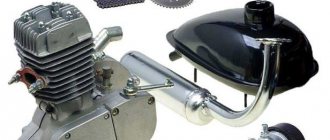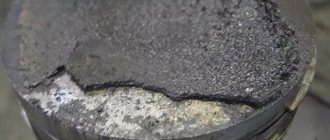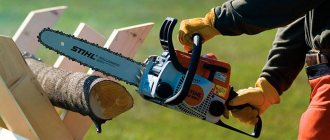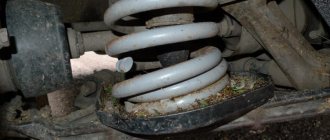Lubricant product i20 belongs to the category of industrial oils, which are petroleum substances obtained as a result of distillation, with various degrees of viscosity. It is obtained as a result of deep oil refining.
In the manufacturing sector, the manufacturing process can be carried out in several ways:
- fractional processing of fuel oil with distillation;
- production of tars with deasphalting;
- using the residual production method with selection of the degree of viscosity.
All lubricating compounds are regulated according to GOST 2079988. According to the accepted standard, they are divided into the following types:
- Transmission oils used for automotive components;
- Industrial oils i20b, i20a;
- Motor lubricants for vehicle engines;
- Reactive additives used to lubricate turbojet systems.
For stationary production equipment located in heated areas of the premises, oils with a low viscosity level and a small amount of additives are used. They are used to lubricate textile and sewing machines and components of measuring instruments.
As for high-viscosity oils, they are most often used for open systems to lubricate bearings, compressors and machine tool clamps. The use of industrial fluid with a set of additives helps normalize pressure, reduce jerking, and improve the operation of the hydraulic system. In addition, lubricants protect metal surfaces from corrosive effects.
Additives with a low level of quality are used for hardening metal, for impregnation and protection against corrosion. Very often, production operations related to mechanical engineering (polishing, deburring, grinding) are performed in lubricant baths. U20 liquids are used as a lubricant. They are also used for metal preservation. Water-oil mixtures based on the product i20 are relevant for cooling. Low-grade oils are used to lubricate the formwork of reinforced concrete structures.
Industrial oils are produced in bulk containers - these can be 1 liter canisters or 200 liter barrels. Railroad tanks are used for transportation. The cost of IM depends on the manufacturer and level of performance, as well as the presence of additives.
Specifications
When considering the technical characteristics, it should be taken into account that industrial lubricant differs significantly from hydraulic fluid and motor oil, as well as other petroleum products. Industrial oils are widely used at medium operating temperatures. The composition includes petroleum and sulfur. It is obtained as a lubricant during deep processing of petroleum products.
Characteristics of I-20A oil and its analogues
Grade I-20A corresponds to the following performance properties:
- Density can vary in a different range, depending on the composition.
- Viscosity largely depends on the previous indicator, as well as the operating temperature.
- Temperature conditions. The pour point is an important indicator that should be taken into account when choosing a lubricant. For the brand in question, the indicator is -15 degrees Celsius. This indicator was achieved through the inclusion of various additives in the composition. Flash point determines how flammable a substance is.
- The color of the product indicates the composition of the substance. A standard CNT type colorimeter is used for measurement.
- Ash content characterizes the ratio of solid residue to the total mass of the lubricant. Harmful impurities remain as sediment after combustion.
- Protective properties that the composition has. By adding various substances, the anti-corrosion resistance increases. It is worth considering that due to such lubrication, the main elements of the mechanism do not rust over a long period.
- Anti-foam and demulsifying properties.
- Acid number. This indicator determines how high quality the product is. Various cleaning technologies can be used to purify the composition. Too high a concentration of sulfur and oxides contributes to premature wear of protective mechanisms. The acid number should be 0.03 mg per gram of lubricant.
- Stability against oxidation. Almost all types of lubricant can oxidize when exposed to oxygen. Due to this, the characteristics are significantly reduced, the substance lasts much less. By adding various additives, the protection of the composition from environmental influences is significantly increased.
Characteristics may largely depend on the quality of manufacture of the lubricating consistency. Some parameters are specified in the operating instructions, others are maintained in accordance with established standards.
Download GOST 20799-88
Advantages and disadvantages
The advantages of lubricant I 20a include the following factors.
- Extending the service life of serviced mechanisms.
- Low cost.
- Sufficient thermal-oxidative stability.
- Possibility of use as a basis for a more technologically advanced formula.
- Wide temperature range of application.
- Huge scope of use in industrial equipment.
The disadvantages of industrial oil I20 include a large number of fakes and outdated performance of the protective film (as of 2022, there are more effective offers from competitors). It also has a short service life and the need for frequent replacement. However, all the disadvantages are offset by the positive qualities of the product.
Density and viscosity
Industrial oil I-20 has two main characteristics: density and viscosity. They determine not only the scope of application, but also many other features of the application. According to established standards:
- The density of the lubricating consistency should be 890 kg/m3 at a temperature of about 20 degrees Celsius. It is worth considering that the density and viscosity of I-20 oil are interrelated.
- Viscosity is also an important indicator of lubricants. It is worth considering that the substance must maintain its viscosity when the temperature changes. At 40 degrees Celsius, the viscosity is 29-35 mm2/s.
Oil production process
A serious change in viscosity characteristics can cause the structure to begin to wear out quickly. During friction, the temperature may increase, and this will lead to a change in the basic performance qualities of the lubricant.
What is used as operating materials for MTZ brand equipment?
The essence of choosing an oil option for use during operation of tractors is to determine the lubricant that best suits the operating conditions of the machines. Incorrect determination of the type of oil leads to increased wear of machine parts, unjustified costs for the purchase of expensive lubricants, excessive consumption of oils and a decrease in the service life of machine mechanisms.
Motor oils
Lubricating fluids used in the operation of power plants are marked with the letter M (motor) and are divided into types and subtypes, designated by other letters and numbers following it.
There are six types - A, B, C, D, D, E.
Lubricants of groups A and B are intended for non-boosted and low-boost engines.
Lubricants of groups B and D used in the operation of medium and high-speed power units have the same composition of additives and differ from each other in the number of additive components - in oils of class G there are more of them.
Lubricants of groups D and E are used exclusively for power units of ships and stationary diesel engines.
The numbers 1 and 2 included in the oil markings indicate the type of engine for which the lubricant is intended: 1 - carburetor power plants, 2 - engines designed to consume diesel fuel.
Most of the machines produced by MTZ-Holding are equipped with medium- and high-boost power plants that operate using diesel fuel and use V2 and G2 motor oils.
https://youtube.com/watch?v=9urJ59wjNhw
For engines of tractors and other units, it is best to use the type of oil specified in the operating instructions.
If necessary, it is allowed to mix different oils of the same group intended for use during the same season. Mixing lubricants of different groups and seasonality is strictly prohibited.
Transmission lubricants
Having a purpose similar to motor lubricants, transmission oils are designed to operate at higher loads, lower temperature of the elements and lower speed than that of the engine.
Marking of gear oils includes:
- Capital letters indicating the area of application: T (transmission), A (automotive) and C (made from sulfur raw materials);
- Lowercase letters p (additive) or d (distillate);
- Digital viscosity value.
Sometimes at the end of the lubricant marking there is a letter B, indicating improved qualities. This lubricant is an improved modification of its basic version.
Low-viscosity lubricants TAp-15V, TSp-10 and TSp-15K have found the greatest application in the operation of tractor transmission units. These types of oils are used year-round for the operation of the intermediate support, as well as the main and final drives of drive axles, with annual replacement.
The TSp-10 lubricant is most adapted to low temperature conditions and is used year-round when operating tractors in the northern regions.
For tractor hydraulic systems
In the hydraulic systems of tractors, specialized hydraulic oils are used, divided into 10 viscosity classes, motor lubricants for diesel and gasoline installations, as well as industrial lubricants I-20L and I-ZOA.
Thus, when operating MTZ-80 and 82, motor oil M12G1 can be poured into the oil tank of the tractor hydraulic system, as well as lubricants M10G2, M10B2, M12G2 and M8G2, M8B2, M8B1, M8B1 in summer - in winter.
To lubricate the rubbing elements of tractors, anti-friction lubricants Litol-24 and CIATIM-201 are used. No. 158 and various types of solid oils.
Application of industrial oil
It should be taken into account that industrial oil I-20A has a specific area of application. If it is not used for its intended purpose, the substance will not provide the required degree of lubrication. Spindle oil I-20A is intended to slow down the wear of the main elements in the following devices:
- Rolling machines.
- Metal-cutting structures.
- Equipment intended for pressing.
- Pumps of various offers.
- Textile machines, the use of which is associated with the manufacture of various products.
- Fans designed to supply air.
- For lubrication of various industrial equipment.
Use of I-20A oil as a lubricant
The basic qualities of lubricants determine that the brand in question can only be used in the event of slight pressure between the rubbing elements. An example of use is the lubrication of moving elements of an open pair.
In addition, the use of I-20A oil allows:
- Protect the surface from corrosion.
- Remove excess temperature from rubbing surfaces.
- Clean the metal surface from dirt.
- Foaming is not allowed.
It is worth considering that as the working environment is used, it begins to age. In this case, performance decreases, for example, elasticity is lost. To solve the problem, a special filter design is required. In addition, the working environment is completely or partially replaced.
Classification of products by purpose
Automotive oil production diagram.
All liquids used in industry can be divided into 4 groups according to their intended purpose. There is also a classification according to the level of performance properties; there are 5 subgroups. In addition, oils are divided into 18 classes (based on kinematic viscosity, which is measured at 40°C).
Liquids are divided according to their intended purpose. This division corresponds to ISO 3498-79, in addition, it takes into account the requirements of the ISO 6743/0-81 standard. The viscosity division is carried out in accordance with ISO 3448-75.
The introduction of GOST 17479.4-87 contributed to the unification of the entire range of liquids that are used in industry.
Analogs of I-20A oil
Industrial oil is characterized by certain performance characteristics that are common to several brands. Foreign manufacturers also produce similar lubricants, but the marking is carried out using other standards.
VMGZ-45 - analogue of I-20A
Analogue of oil I-20A Shell Morlina S2 B 32
Analogues may have slightly different characteristics. Most attention is paid to viscosity and density, as well as operating temperature. The offer of domestic manufacturers is much cheaper, but foreign products often last longer and have more attractive performance characteristics.
Features of industrial oils
They fully comply with ISO and GOST classifications. They are usually identified as a separate category of lubricants. Industrial additives are used for aviation, hydraulic, and automobile oils. Their main advantage is their adaptability to operation in thermal zones. That is, liquids are actively used for stationary installations. The chemical composition differs from oils used for automotive needs.
If we are talking about the base product for creating oily substances under group i20, then it is worth highlighting oil with a low or medium level of sulfur content. At the preliminary stage, deep oil refining work is carried out to create the liquid.
Experts identify several technologies for the production of lubricants and20:
- Distillation – processing of fuel oil by vacuum;
- Treatment of tars with a high content of deasphalted compounds;
- Compounding technology is an oil compound obtained as a result of the first two methods while maintaining viscosity and density.
The properties and characteristics of industrial oils are identical to petroleum oils obtained as a result of distillation with different viscosity levels. In industrial production it is necessary to use light and cheap lubricants, without the addition of synthetic components and additives. Since it is impossible to use seasonal oils for equipment used indoors. Therefore, it is recommended to lubricate IM i20a equipment - it can withstand temperature loads well.
Application of different brands
Industrial oils of grades I-5 and I-8A are used in control and measuring instruments, lightly loaded high-speed mechanisms and various technological lines for the production of creams, fatliquoring of leather, etc.
Among the oils of this group, I-12A oil is most widely used: friction units of metal-cutting machines, textile machines, volumetric hydraulic drives, electric motor bearings, etc.
Such brands of oils as I-20A, I-30A, I-40A and I-50A have found their application in hydraulic systems of construction and road machines, various machine tools, light and medium-loaded gears, etc.
High-speed mechanisms (textile machines, separators, metal-cutting machines, etc.) use low-viscosity general-purpose oils of grades I-5A and I-8A. Also for the same purposes, oils of the IGP-2, IGP-4, IGP-6, IGP-8 and IGP-14 brands can be used, but with improved antioxidant, anti-corrosion and anti-wear properties.
In lightly loaded hydraulic systems that do not place high demands on the quality of oils, mainly general-purpose industrial oils with the required viscosity index are used.
Oils such as IGP-18, IGP-30, IGP-38, IGP-49 contribute to the reliable operation of automatic lines, gearboxes, presses, variators and hydraulic systems of machine tools.
Oils with higher viscosity (IGP-72, IGP-91, IGP-114) have found their application in heavy press equipment, worm and gear reducers.
Analogs of IGP-30 and IGP-49 oils - VNII NP-403 and VNII NP-406, can also be used in hydraulic systems of machine tools and automatic lines.
Specialized oils of the IRp-40, IRp-75, IRp-150 brands with special additives are used in gears operating under increased loads, including shock, as well as in circulation systems.
Oils of the ISP series (ISP-25, ISP-40, ISP-65, ISP-110) have increased lubricity. This feature facilitates their use in gearboxes, speed and feed boxes, geared motors, as well as other mechanisms of machine tools and automatic lines. Heavy oils of the IGP-152 and IGP-182 brands are used for similar purposes.
Viscous oils of the ITP series (grades ITP-200 and ITP-300), containing extreme pressure, anti-oxidation and anti-friction additives, are used to lubricate heavily loaded gear and worm gearboxes, bearings, gearboxes, as well as components that operate under high loads and temperatures.
If we are dealing with lightly loaded gears, including open ones, or hoisting and transport machines, then it is necessary to use special transmission oils (nigrols) with a minimum operating temperature of -10 ºС (summer) and -20 ºС (winter).
For sliding guides, oils are used to promote uniform, slow and accurate movement of the mating surfaces of supports, tables and other components of machine tools. In most cases, these are oils from the INSp series.
For example, industrial oil brand INSp-40 has found its application in horizontal guides of machine tools. Oil INSp-65 – for heavily loaded horizontal and vertical guides with a common lubrication system. INSp-110 – for vertical and horizontal guides, including horizontal ones with large vertical edges.
When operating high-speed spinning machines, VNII NP-401 oil is used to lubricate their sliding guides.
Industrial oils for special purposes have found their application in narrow and specific areas, so they are not discussed in detail here.
Requirements
Accordingly, the requirements for oils of this type also differ. The basic condition for the use of industrial oils in lightly loaded friction units (sliding bearings and associated units, spindles) is the ability to maintain viscosity and a high viscosity index at the required level at operating temperatures. It is also necessary to monitor the optimal piezoviscosity coefficient.
If industrial oil is used in the hydraulic system of a metal-cutting machine, automatic line, press or other similar equipment, then it is subject to requirements for oil compression and guaranteeing the required viscosity at operating pressures and temperatures.
The main distinguishing feature of the moving units of machines with sliding guides is the possibility of their abrupt movement at low sliding speeds (from 0.016 to 3 mm/s) and contact pressures (not higher than 1 MPa). These are so-called frictional vibrations. They interfere with the uniform feeding of the tool, and also reduce the quality and accuracy of processing. Based on the above, we can formulate the main requirement for oils that are intended for lubricating sliding guides - these are good lubricating and anti-jump properties.
Oils designed to lubricate gears have to work under the most severe conditions. This is a consequence of the fact that in industrial gearboxes the operating temperatures can vary over a fairly wide range, ranging from ambient temperature to 130 ºС and above. The speeds on the meshing line of worm gearboxes are also high (up to 25 m/s). Industrial oils are exposed to energy that sometimes exceeds 1 kJ/kmol, and the shear stress is about 104...105 Pa.
The corresponding requirements for oils of this subgroup are also put forward: high anti-wear, extreme pressure and anti-friction properties, the ability to stabilize the coefficient of friction, ensuring smooth and stable gliding. It is also necessary to maintain viscosity, viscosity index, and piezoviscosity at an optimal level. The flash point should be high enough and the pour point low.
Implementation
Oils are sold by industrial manufacturers, as well as marketing companies. Products are shipped, as a rule, in railway tanks. Some manufacturers offer different packaging of products: from liter canisters to barrels with a volume of more than 200 liters.
The cost of production depends on various factors. Buyers determine the relationship between quality and price independently, based on the basic properties of the product. Transportation tariffs also affect the cost of products.
Division according to application
Depending on the area of application, industrial oils are conventionally divided into two groups: general and special purpose.
Recently, the development of alloyed industrial oils has led to an increase in production volumes and range of lubricating oils.
From the group of general purpose oils, we can currently distinguish oils for high-speed mechanisms, sliding guides of machine tools, hydraulic systems and gears of industrial equipment.
As for marking, in all brands of industrial oils the number after the letter shows the value of kinematic viscosity at a temperature of 50 ºС.
The area of application of general purpose industrial oils is the lubrication of the most widely used components and mechanisms of various equipment.
In terms of composition, oils in this group are purified distillate and residual oils or a mixture of distillate and residual oils without additives.











